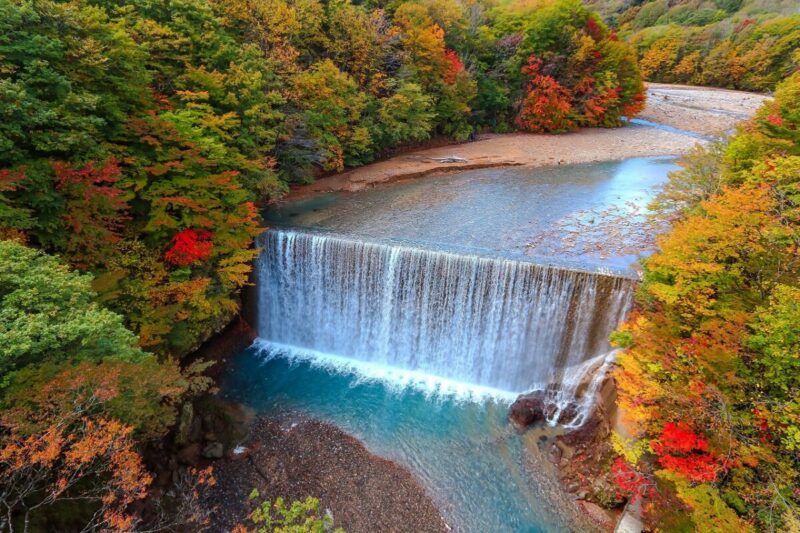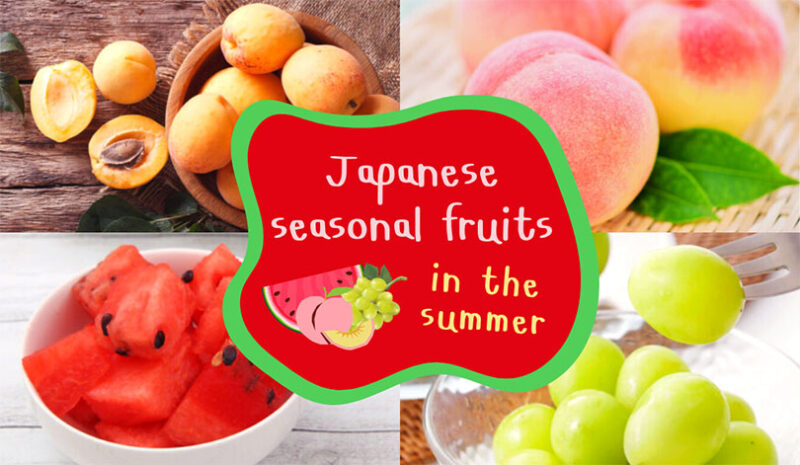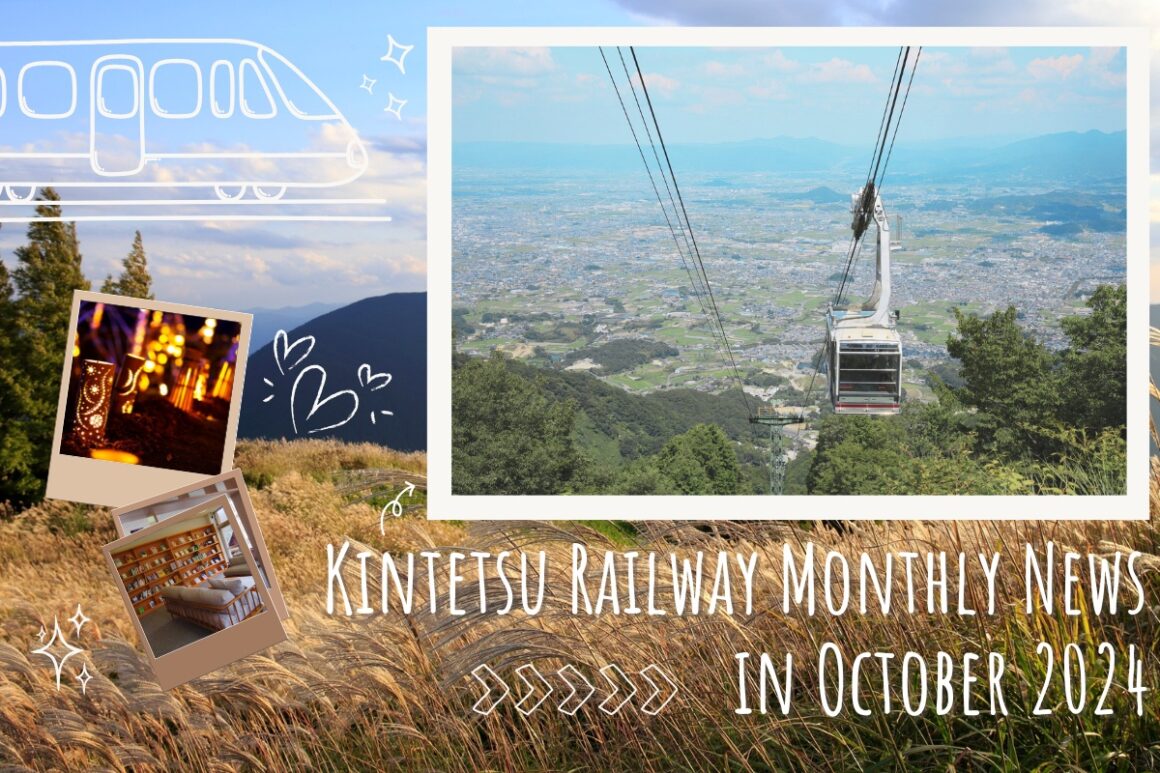10 amazing things to do in Iwate, Japan!
Feb 25, 2021
Iwate Prefecture is known as the 2nd largest prefecture in Japan, and it’s in the north of Japan’s main island, facing the Pacific Ocean. Iwate is the home to many historically significant destinations, beautiful natural landscapes, and a variety of rural towns and villages, making it a great spot to visit if you want to escape from the hustle and bustle of big cities like Tokyo or Osaka.
There are a lot of beautiful destinations to visit in Iwate, including the Hachimantai, Jodogahama, and the breathtaking Genbikei Gorge. Other sightseeing spots to visit in Iwate are the Koiwai Farm, one of the most famous farms in Japan, and Miyazawa Kenji Fairytale Village, which is famous for its mesmerizing summer illuminations.
Blessed with beautiful nature and interesting tourist destinations, how about visiting Iwate to have both, an extraordinary, yet a novel adventure?
Index
How to get there
Recommended sightseeing spots in Iwate
Iwate’s best local treats
How to get there
Iwate Prefecture is accessible by several different transportation methods, including trains, highway buses, and airplanes. The main transportation hubs in Iwate are Morioka Station and Iwate-Hanamaki Airport.
The most convenient way to get to Iwate from Tokyo is by taking the JR Tohoku Shinkansen, which connects both areas directly. The one-way trip from Tokyo Station to Morioka Station takes around 2 hours and 15 minutes, and costs around 17,000 yen, and it is fully covered by the JR Pass, the JR East Pass (Tohoku Area), and JR East-South Hokkaido Rail Pass.
The main airport in Iwate is the Iwate-Hanamaki Airport, and domestic flights from major cities like Sapporo, Nagoya, Osaka, and Fukuoka are available on daily basis.
Recommended sightseeing spots in Iwate
Known as the second largest prefecture in Japan, Iwate is a perfect destination for those looking for something off the beaten path, particularly for those who want novel travel experiences, but want to avoid the hustle and bustle of the big cities.
Bordered by the Pacific Ocean and the mountains, Iwate is home to many beautiful natural landscapes like Jodogahama, Hachimantai, and Genbikei Gorge, making it a perfect destination for nature enthusiasts. In addition to its impressive natural landscapes, there are a lot of things to see when you’re in Iwate, this includes the Miyazawa Kenji Fairytale Village, which is famous for its summer illuminations, and Chusonji, a UNESCO World Heritage Site that is best known for its breathtaking fall foliage.
Ready to take yourself to Iwate? Here are our picks for the best things to do in Iwate, Japan!
1. Visit the UNESCO World Heritage Site, Chusonji
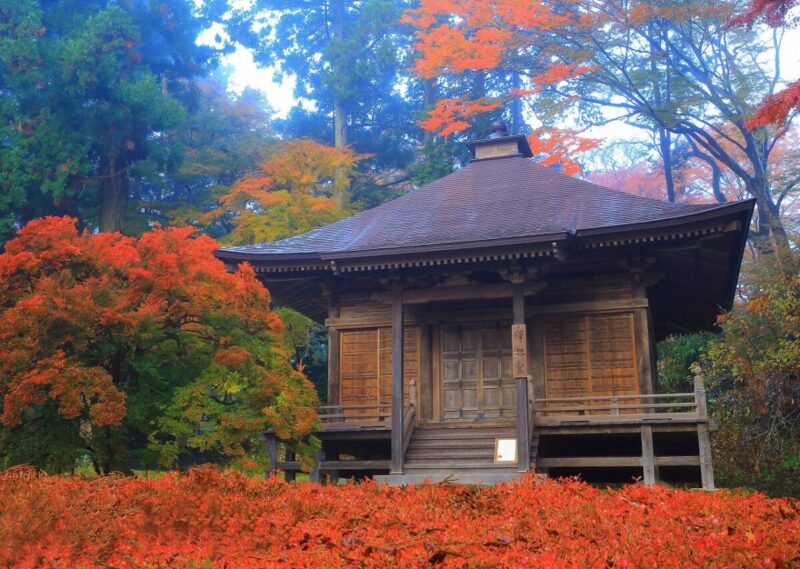
Chusonji is the Buddhist Temple in Hiraizumi, a city in south Iwate, and it is the main temple of the Tendai sect in Tohoku. The temple was registered as UNESCO World Heritage Sites in 2011 as “Hiraizumi Cultural Heritage Structural Properties”, and the temple is the home to the Konjikido, the first structure designated as a Japanese national treasure.
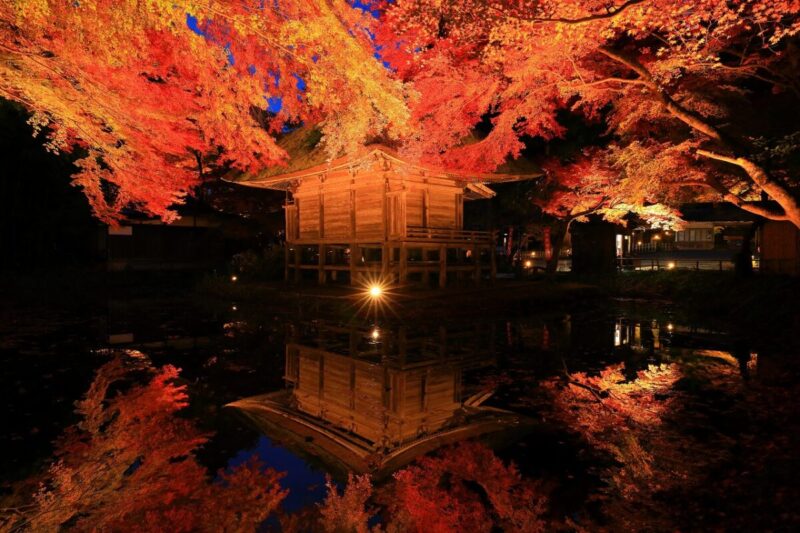
Chusonji was built at the beginning of 12th century by Fujiwara no Kiyohara, the founder of the Oshu Fujiwara Clan, but a fire destroyed many of the temple’s halls, pagodas, and treasures in 1337. However, more than 3,000 national treasures and important cultural assets stored in the premises survived, including the Konjikido. These days, Chusonji has become a famous spot for fall foliage, and many people visit the temple at night to see the breathtaking fall illuminations.
Chusonji
-
- Business hours : 8:30 – 17:00 (March to November 3), 8:30 – 16:30 (November 4 to February)
- Admissions : 800 yen (age 18 & above), 500 yen (high school students), 300 yen (junior high school students), 200 yen (elementary school students)
- Google Map
- Website
2. Stop by one of the most important farms in Japan, Koiwai Farm!

Koiwai Farm is in the west of Iwate, and it has been serving the area since 1891, making it one of the most important farms in Japan. Koiwai Farm is the largest private farm of Japan, and many people visit the farm to enjoy its beautiful natural landscapes and delicious dairy products.
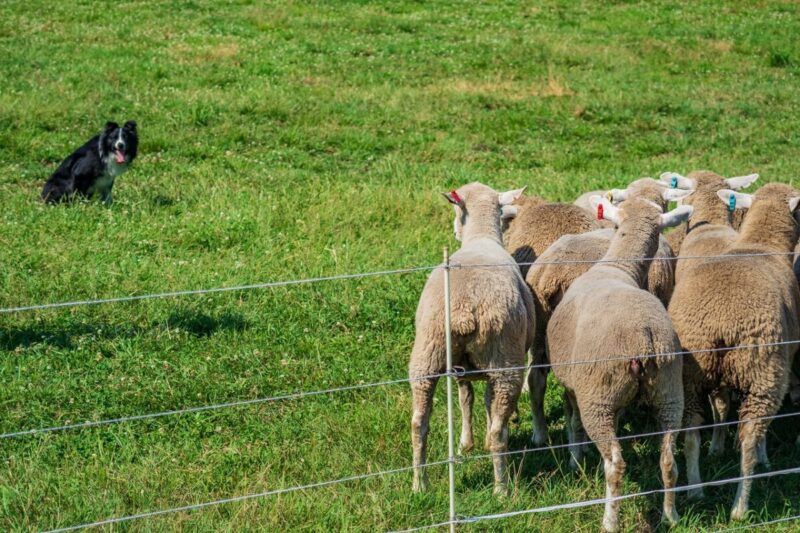
The farm also offers animal shows, including a show where the shepherd dog leads the sheep to go to the barns. The farm offers plenty of dining and shopping opportunities too, allowing you to try Koiwai’s dairy products like cheeses, ice creams, milk, and of course, soft-serve ice cream.
Koiwai Farm
- Business hours : 9:00 – 17:00
- Closed on Wednesdays
- Google Map
- Website
3. Enjoy the gorgeous view of Hachimantai!

Hachimantai is a mountainous area that stretches from Iwate to Akita, the neighboring prefecture, and it’s a spot you should never miss if you love beautiful natural landscapes. One of the best highlights of Hachimantai is the Towada-Hachimantai National Park, where you can meet a lot of animals and experience unusual natural phenomena.
The best time to visit the national park is in summer, when its surroundings turn to fresh greenery, or in fall, when its surroundings are covered by the red and golden leaves. In addition to the natural park, there are some onsen towns around the area too, where you can relax your body after a long trip.
Hachimantai
4. Explore Jodogahama, one of the most beautiful beaches in Japan!
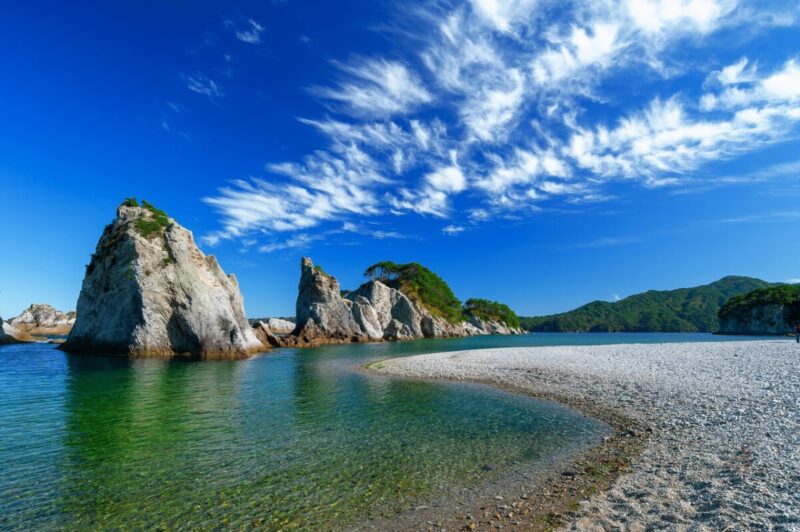
Iwate is known for having a deeply indented coastline on the east side, and Jodogahama is a popular beach and tourist site in the Sanriku Coast area. The beach is considered as one of the most iconic beaches in Japan, and it is also listed on 100 Best Beaches in Japan. The beach has tiny white rocks, and there are boat tours that will take you to see the nearby rocky islands and formations from up close. There are several caves to explore with the boat, and even though you cannot swim in this area, the beach is still worth to visit for its unique scenery.
Jodogahama
5. Stroll around the Miyazawa Kenji Fairytale Village!
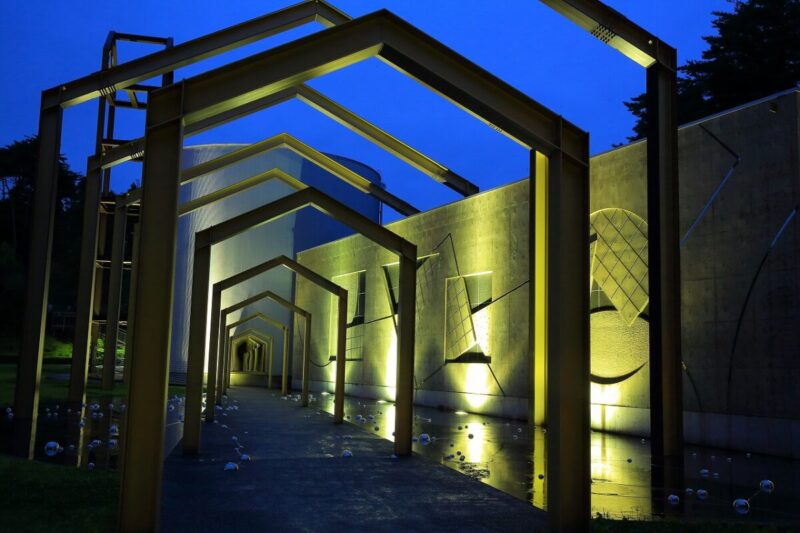
Miyazawa Kenji was a famous poet and author of Japanese fairy tales, and some of his most famous works are “Ginga Tetsudo no Yoru” (Night on the Galactic Railroad) and “Ame ni mo Makezu” (To Not Be Defeated by the Rain). Kenji was born and raised in Hanamaki and Morioka City, and Miyazawa Kenji Fairytale Village is where the fairytale worlds of Miyazawa Kenji come to life.
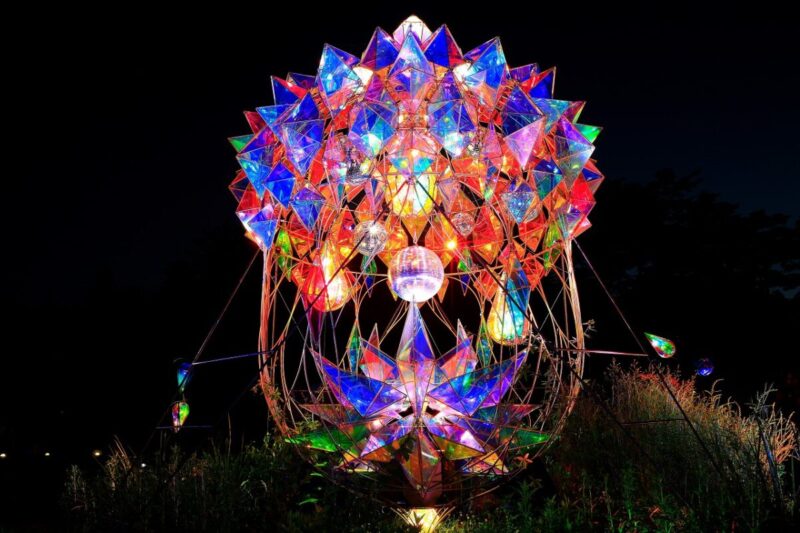
The facility is divided into several areas, which are “Fantastic Hall”, “Space”, “Sky”, “Earth”, and “Water”, where you can experience the imaginary world of Ihatov, a land of imagination created by Miyazawa Kenji. In addition to its amazing facilities, the fairytale village is also known for its beautiful and colorful summer illuminations.
Miyazawa Kenji Fairytale Village
-
- Business hours : 8:30 – 16:30
- Closed from December 28 to January 1
- Admissions : 550 yen (adults), 350 yen (high school & college students), 200 yen (elementary & junior high school students)
- Google Map
6. See the gorgeous roses at Hanamaki Onsen Rose Garden!
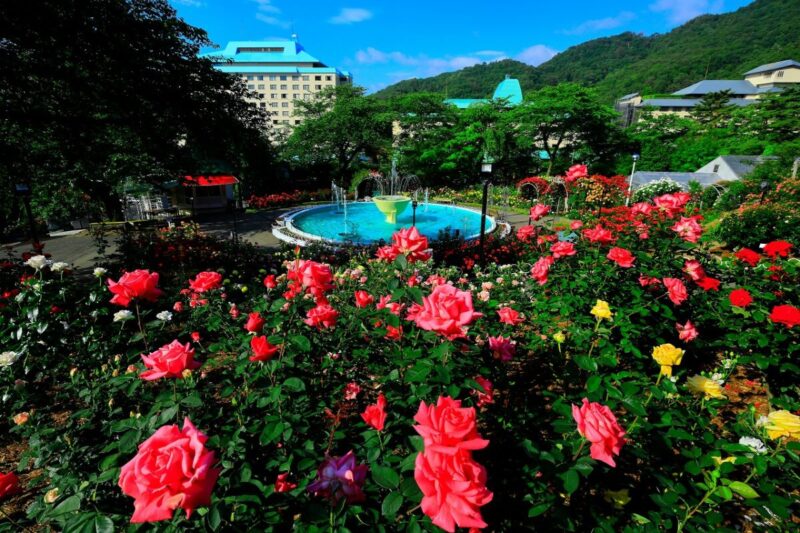
Hanamaki Onsen Rose Garden is a garden in Hanamaki Onsen, a famous hot spring town of Iwate Prefecture. The garden is best known for having a wide variety of roses, including 6,000 roses from around the world. The roses at the flower bed outside can be enjoyed until the end of November, whereas the roses in the green house can be enjoyed all year. The garden also has seasonal flowers like tulips, begonia, and marigold, so make sure to check the flower schedule before visiting the garden!
Hanamaki Onsen
-
- Business hours : 8:00 – 17:00
- Admissions : 800 yen (from late May to early July), 500 yen (from early July to late October), free (from late October to late May)
- Google Map
- Website (Japanese)
7. Enjoy the scenic view of Genbikei Gorge!
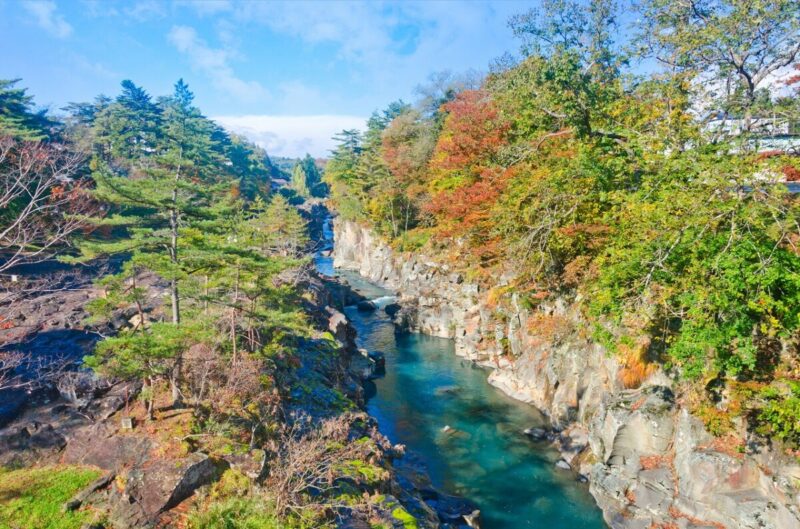
Genbikei Gorge is a valley in the south-western of Iwate Prefecture, and it is one of the best natural landscapes in Iwate, where you can see views of rich greeneries that change their colors every season.
Genbikei Gorge is best known for its spectacular views of the river and cliffs, and you can get on a riverboat to visit Geibikei Gorge, another valley nearby Genbikei Gorge, where you can see impressive views of the cliff sides from up close. Both gorges are known for its beautiful scenery in fall, but Genbikei Gorge is the most famous among the two gorges.
Genbikei Gorge
8. Get on Sanriku Railway, one of the most important railways in Tohoku region

Sanriku Railway is considered as one of the most important railways in the Tohoku region, and it was used as the backdrop of a popular Japanese TV show called Ama-chan. The railway was once destroyed by the 2011 earthquake, but it re-opened in 2014, making it a symbol of Japan’s recovery. The Sanriku Railway runs along the Sanriku Coast, connecting Miyagi and Aomori Prefectures. The trains stop at all tourist spots along the coast, serve local food, and provide heated kotatsu tables with blankets in the winter.
Sanriku Railway
-
- See the official website for time table & fare : Website
9. Find your peace at Motsuji Temple!
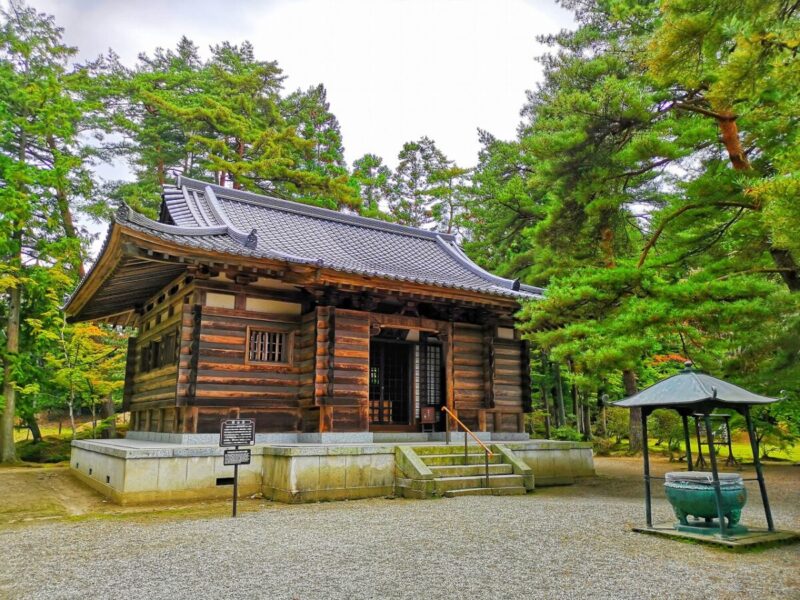
Motsuji Temple is in Hiraizumi, nearby the Chusonji, and it is known as an important temple of the Tendai sect. The premise had numerous buildings, but know the temple is best known for its garden.
Motsuji Temple was registered as World Heritage Sites in 2011 as “Hiraizumi Cultural Heritage Structural Properties”, along with Chusonji. The temple is a perfect place to escape from the hustle and bustle of everyday life, and the best time to visit the temple is in early summer, when the garden is covered with Irises, or in early autumn, when the garden is covered with Hagi, a Japanese bush clover.
Motsuji Temple
-
- Business hours : 8:30 – 17:00 (March 5 to November 4), 8:30 – 16:30 (November 5 to March 4)
- Admissions : 700 yen (adults), 400 yen (high school students), 200 yen (elementary & junior high school students)
- Google Map
- Website
10. Spend half a day at Tono Furusato Village!
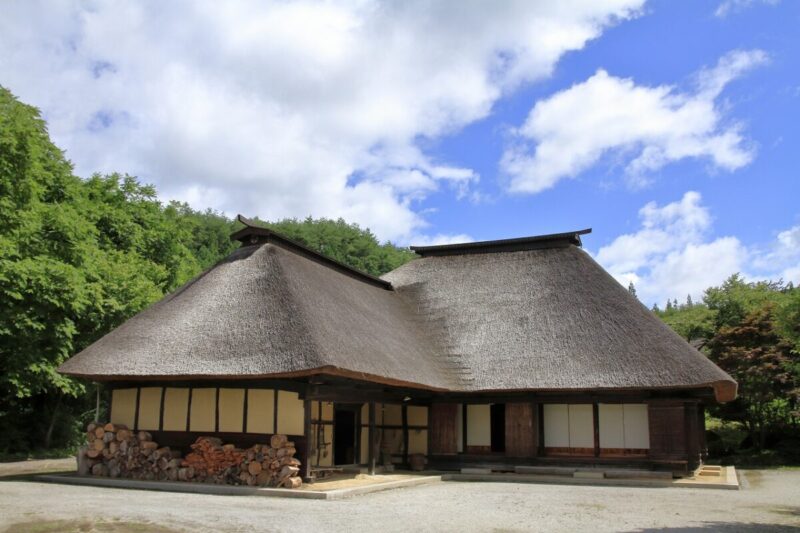
Tono Furusato Village sits in the center of Iwate Prefecture and it is known as “The City of Folklore”. The village is rich in culture, and it offers many exciting experiences, in which you can learn about the traditional farm life and experience the local cultures through the activities and performances offered there.

The village also holds several festivals and events annually, including folklore festivals, rice planting events, and horseback archery. In the premise, there are also a lot of historical artifacts to see, including the traditional big mill wheel.
Tono Furusato Village
-
- Business hours : 9:00 – 17:00 (March to October), 9:00 – 16:00 (November to February)
- Admissions: 540 yen (age 18 & above), 320 yen (age 6-17)
- Google Map
- Website
Iwate’s best local treats
Iwate is blessed with beautiful natural landscapes, and the prefecture is brimming with a variety of delicious dishes, including the Three Great Noodle Dishes of Morioka, as well as Maesawa Beef, a wagyu brand originated in Iwate. Ready to fill your empty tummy with Iwate’s local delicacies? Here are our picks for the best foods to try when visiting Iwate!
1. Morioka Reimen
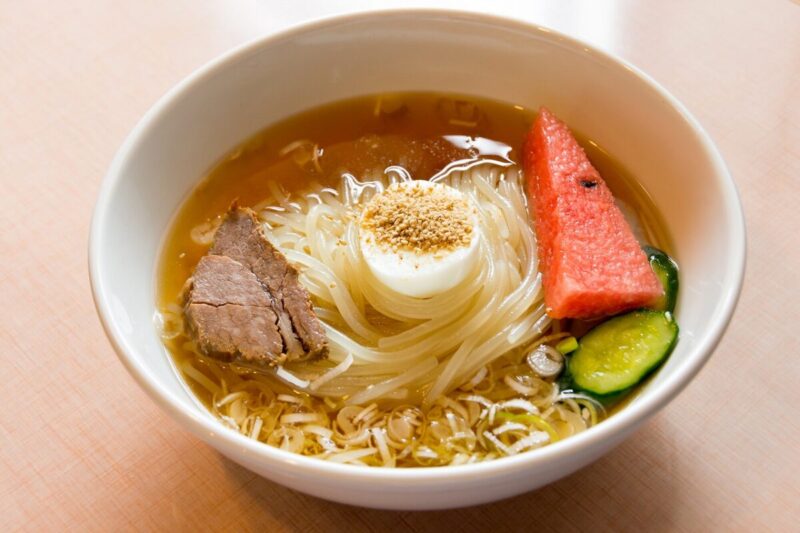
Morioka Reimen is probably the most famous noodle dish among the three great noodle dishes of Morioka, and it is usually served as an appetizer at yakiniku restaurants in Morioka. The noodles originated from South Korea, but it was later arranged to suit the taste buds of the locals in Morioka. The noodles used in Reimen are made from a dough of starch and potatoes, and they have silky and smooth textures. Morioka Reimen is served cold, using a soup made of beef and chicken stocks.
2. Morioka Jajamen
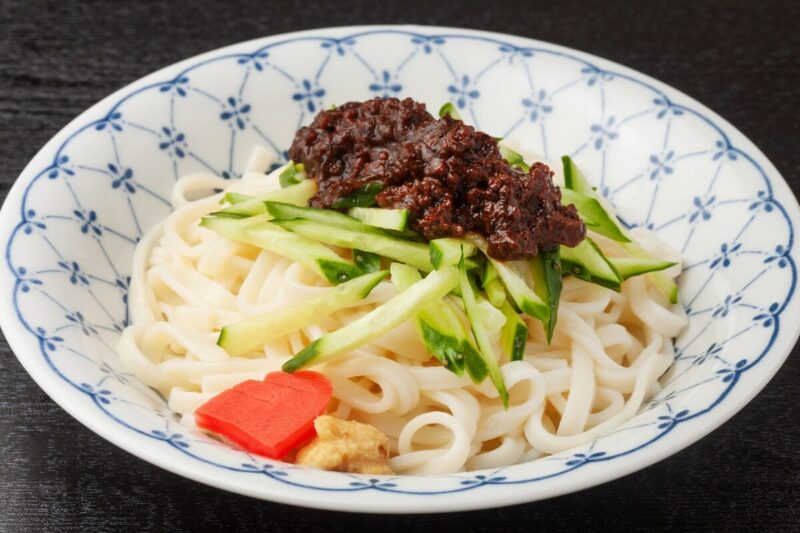
Morioka Jajamen is one of the three great noodles dishes of Morioka, and it was invented in a Chinese restaurant in Morioka. Rumors said that the noodles adapted a Chinese dish called Zhajiangmian. The noodles are served with salty miso meat sauce, some garlic oil, and thinly sliced cucumbers.
3. Wanko Soba
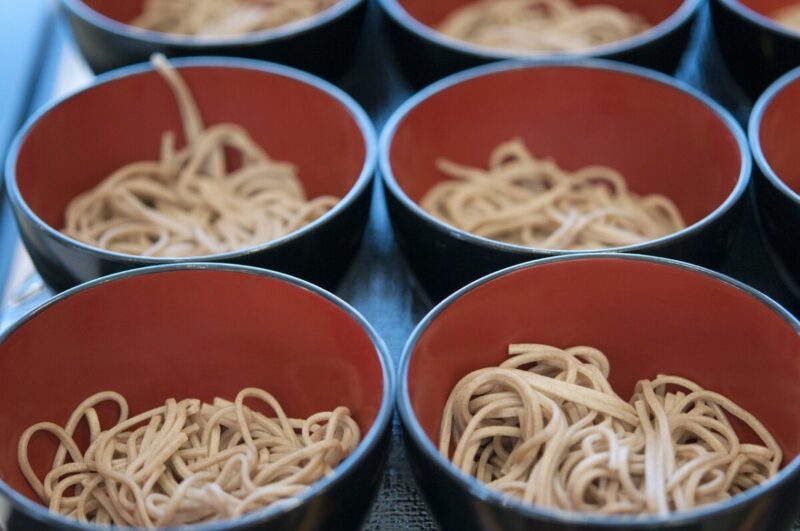
Wanko Soba was also invented in Morioka, and it is best known for having a unique eating style. The noodles are served in a small bowl, and as soon as you finish your noodles, another bowl of fresh soba will be served for you. This process is repeated multiple times, and if you want to stop, you need to put a lid over their bowl to indicate that you’ve had enough.
4. Urui Tempura
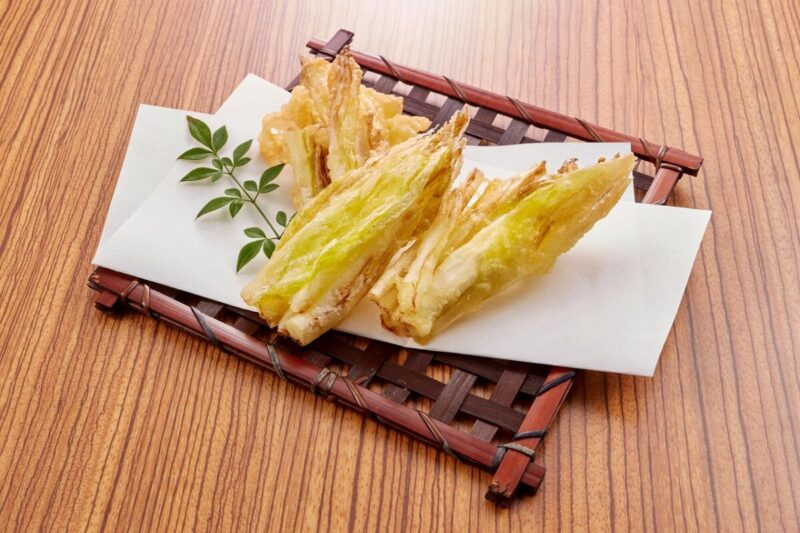
Urui is a local vegetable of Iwate, which can be found in its mountainous area. The vegetable is known for having crispy texture, and the best way to eat Urui is usually by having it as a tempura.
5. Maesawa Beef
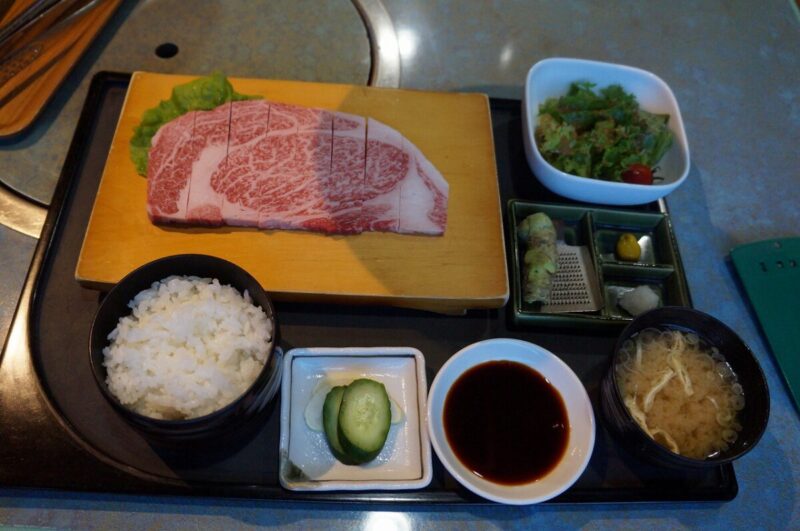
Maesawa Beef is a wagyu brand from cows raised in Maesawa, Iwate, and it is best known for its melt-in-your-mouth texture. Maesawa Beef refers to the cattle that have met the strict certification standards, and it is best known for its finely marbled texture. The best way to enjoy Maesawa Beef is by having it as a steak.
.
Now that you have an idea of how many fabulous spots are in Iwate, all you must do is plan your itinerary to enjoy unforgettable experiences in Iwate!
